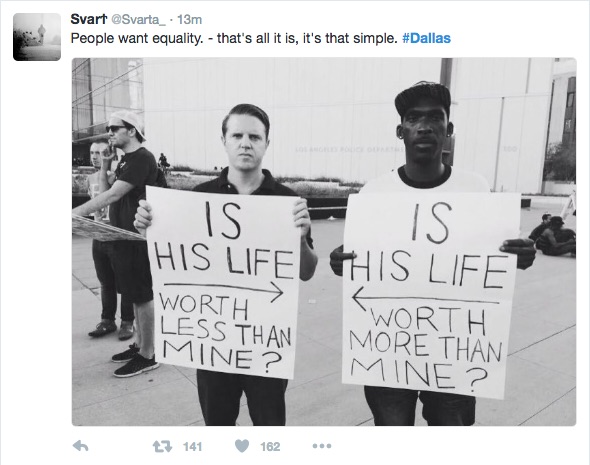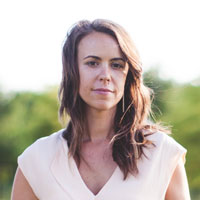I remember the first day of my Civil Rights class at Northern Kentucky University.
An older white woman with a white bob cut, large owl glasses and a soft presence greeted us. Her name was Anne Braden. I was prepared to crack open my book and start digging into the archives of history.
Anne asked us to push our books aside and take out a piece of paper instead. “Write down the first time you realized there is racism.” I sat with my pen perched in pause. I kept trying to dig deeper and deeper into my life. There had to be an earlier time when I became aware of racism. However, there wasn’t. I hadn’t fully understood that racism existed until the age of seventeen. The realization shocked me.
Anne never did ask us to open that book. A long-time journalist and Southern organizer, Anne taught us that history is always happening and that we must choose which side of it to step into. Anne told stories about racial justice organizing in Louisville, Kentucky and all across the south. She shared personal stories about Martin Luther King, Jr. and people I’d never heard of, like Fannie Lou Hamer and Ella Baker. She lifted up student activism on campus and always made room to discuss current events and campus activism.
I soon joined the campus activist group, Students Together Against Racism (STAR). There I learned how to listen to people of color, the importance of building relationships with other white folks in order to hold each other accountable in our privilege, and how important it is for white folks to study and learn the real history of the United States, told by those most affected. Anne gave me a language for understanding what I could be: an antiracist white person.
One day, I shared with Anne that I planned to study sociology and focus on criminology in graduate school. She cocked her head and raised her eyebrows, and then she asked, “Why?” I talked with her about a youth center I had worked at and how the kids there were being criminalized because of their race.
“What are you going to do with a degree like that, though? What are you going to do?”
I paused and thought about it, and then I got it. She was asking me how I was planning to use my white body to interrupt racism. Anne advocated for students to embody justice and constantly question our motives. Were they based in dismantling white supremacy or upholding our own privileges?
I altered my path and moved to Louisville, Kentucky, where I joined a powerful community of white, black and Latino/a people, many of whom, like me, were Anne’s mentees.
That was over a decade ago, yet the racism and state violence against black and brown bodies continues. Since the death of Trayvon Martin, I have seen an awakening occur for many white people, especially young folks and people of faith.
Lately, I’ve been reflecting on my journey as a white antiracist in an effort to understand how to better show up for racial justice and bring others along for the journey. Here are a few of the key cornerstones I’ve identified.
1. Mentorship.
Mentorship is a mirror that reflects back to us our divinity. So many young activists I’ve talked with and coached struggle with finding a mentor. Let’s expand our definitions of mentorship. Mentorship can look like calling on our ancestors or heroines to guide us. Mentorship may be the connection we feel in the natural world, it can come from a peer or even a child. Our yoga, meditation and prayer practices can act as a mentor for us, mirroring back to us where we struggle, where we can go deeper and how vital we are to this world. We need this mirror to ground us and support us to show up, especially when it’s hard. As white folks, as younger and older change-makers, we will make mistakes. Our mentors hold us and love us exactly as we are, helping us to show up to our imperfections with courage.
2. Be emotional.
In the Western world there is an often unspoken belief that to be emotional is to be weak. However, injustice is an affront to our hearts and our spirits, which desire and need connection. When we feel the pain and trauma of the world, we connect to the humanity of others. To feel allows us to go deeper than the intellectual exercise of browsing a Facebook post or skimming a news story. When we feel the weight of the loss of black and brown lives in the world, we interrupt racism’s intention to divide and separate us from each other. When we feel, we move beyond the intellectual and into the body. Present in our body, we then can begin to integrate, heal and embody our values in the world.
3. Show up.
We don’t have to yell into a megaphone, attend protests or even get arrested to be an activist. Showing up looks like people across race linking arms on the picket line, but it also looks like hard conversations with friends and family. Showing up looks like joining a Showing up for Racial Justice (SURJ) chapter meeting even when we don’t know anyone in the group. Showing up looks like writing a post on Facebook, sharing a blog post and placing our bodies in public for racial justice. Showing up helps us determine how we can embody our values in the world. We create change when we show up.
When we show up in our fully broken states, then we heal, then we build, then we deepen our capacity to love each other and ourselves.
I know it’s uncomfortable, my people, but this is our history. What will our legacy be? Will it be one of white silence, or imperfect but embodied action toward racial justice?
I have been working with other white folks to create practices to help us to step into our more courageous leadership.
You can follow and use the hashtag #practiceshowingup. We are asking folks to join us and create practices (a poem, a writing exercise, a meditation or something else) and stories about being white and then posting them on social media, circulating, and practicing showing up together. You can stay connected through the hashtag or on Radical Well, a virtual gathering space for folks interested in the intersections between wellness, social justice and leadership.
We can do this.
~
Suggested Reading:
Finding the Other America by Anne Braden
Towards the “Other America”: Anti-Racist Resources for White People Taking Action for Black Lives Matter by Chris Crass
Author: Jardana Peacock
Image: Svarta_ / Twitter
Editors: Sara Kärpänen; Toby Israel








Read 7 comments and reply